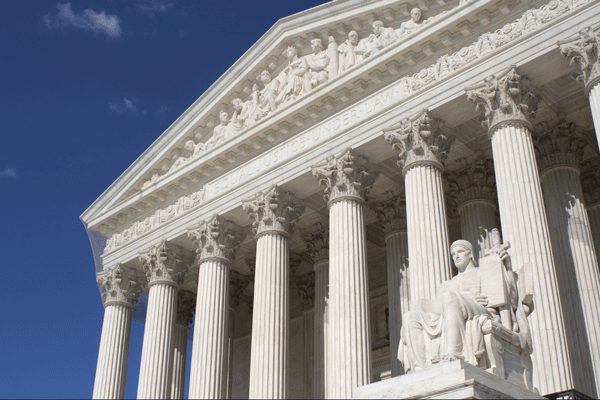Employers or landowners owe a duty of care to prevent secondary exposure to asbestos, the California Supreme Court has ruled in a unanimous decision.
“The duty of employers and premises owners to exercise ordinary care in their use of asbestos includes preventing exposure to asbestos carried by the bodies and clothing of on-site workers,” the court said.
Secondary exposure occurs when a worker who is exposed to a toxin carries it home on his or her person or clothing, and a household member is exposed through physical proximity or contact with that worker or worker’s clothing.
The question arose in two separate cases with similar allegations, Kesner v. Pneumo Abex, LLC and Haver v. BNSF Railway Co., which were consolidated for purposes of the Supreme Court opinion, issued on December 1.
Take-Home Asbestos
In Kesner, Johnny Kesner, Jr. was diagnosed with perotineal mesothelioma in February 2011. He filed suit against a number of defendants, including his uncle’s employer, Pneumo Abex LLC. His uncle, while working for Pneumo Abex, was exposed to asbestos fibers released in the manufacture of brake shoes. For a period of six years (1973 to 1979), Mr. Kesner spent a significant amount of time at his uncle’s house where he would sometimes sleep near his uncle or roughhouse with him while his uncle was wearing his work clothes. Mr. Kesner alleged that he was exposed to asbestos dust carried home on his uncle’s clothes.
In Haver, it was alleged that Lynne Haver, who had been diagnosed with mesothelioma in 2008, was exposed to asbestos fibers through contact with her husband and his clothing beginning in 1973. Her husband was employed by the Atchison, Topeka, and Santa Fe Railroad, a predecessor of BNSF Railway Co., during this time, where he was exposed to asbestos from pipe insulation and other products.
Exposure Foreseeable
The Supreme Court justices noted that they were not deciding whether the plaintiffs had proven that asbestos from the defendants actually and foreseeably reached the plaintiffs, or whether the defendants’ asbestos contributed to the disease that the plaintiffs suffered or whether defendants had adequate procedures in place to prevent take-home exposure.
“Our task is to determine whether household exposure is categorically unforeseeable and, if not, whether allowing the possibility of liability would result in such significant social burdens that the law should not recognize such claims.” The court concluded that “the exposure of household members to take-home asbestos is generally foreseeable and that BNSF and Abex have not shown that categorically barring take-home claims is justified by clear considerations of policy.”
Pointing to Occupational Safety and Health Administration (OSHA) regulations at the time that identified the potential health risks of asbestos traveling outside a worksite, the court found that a reasonably thoughtful person making industrial use of asbestos during the mid-1970s would take into account the possibility that asbestos fibers could become attached to an employee’s clothing or person, travel to that employee’s home, and thereby reach other persons who lived in the home.
Duty of ‘Ordinary Care’
In response to concerns raised by the defendants regarding the unmanageability of claims premised upon secondary exposure, the court specifically identified a limitation on the scope of the duty.
“We are mindful that recognizing a duty to all persons who experienced secondary exposure could invite a mass of litigation that imposes uncertain and potentially massive and uninsurable burdens on defendants, the courts, and society…. Accordingly, we hold that defendants owed the members of their employees’ households a duty of ordinary care to prevent take-home exposure and that this duty extends no further. By drawing the line at members of a household, we limit potential plaintiffs to an identifiable category of persons who, as a class, are most likely to have suffered a legitimate, compensable harm. This rule strikes a workable balance between ensuring that reasonably foreseeable injuries are compensated and protecting courts and defendants from the costs associated with litigation of disproportionately meritless claims.”
Thus, where it is reasonably foreseeable that workers, their clothing, or personal effects will act as vectors carrying asbestos from the premises to household members, employers have a duty to take reasonable care to prevent this means of transmission. This duty also applies to premises owners who use asbestos on their property, subject to any exceptions and affirmative defenses generally applicable to premises owners.


